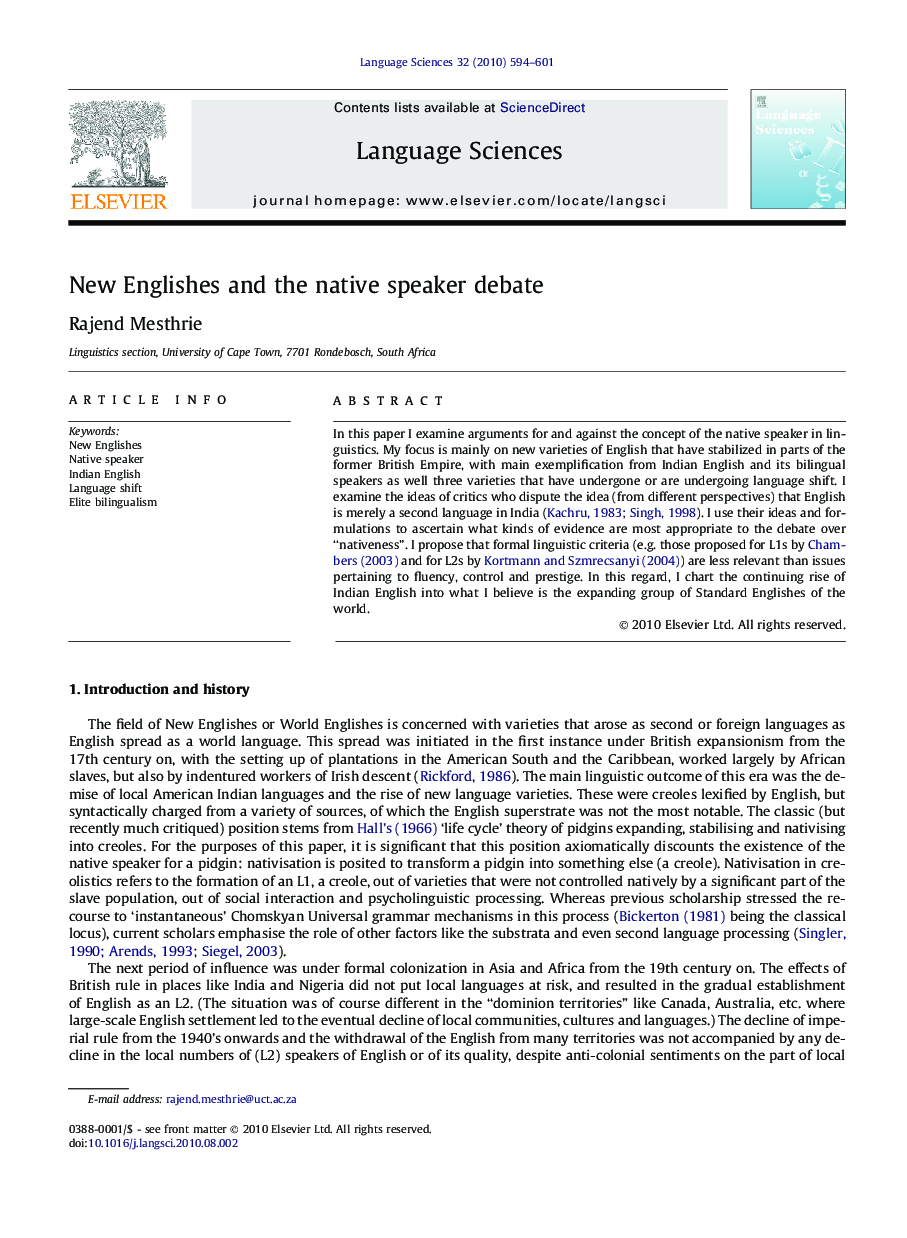| Article ID | Journal | Published Year | Pages | File Type |
|---|---|---|---|---|
| 1103314 | Language Sciences | 2010 | 8 Pages |
In this paper I examine arguments for and against the concept of the native speaker in linguistics. My focus is mainly on new varieties of English that have stabilized in parts of the former British Empire, with main exemplification from Indian English and its bilingual speakers as well three varieties that have undergone or are undergoing language shift. I examine the ideas of critics who dispute the idea (from different perspectives) that English is merely a second language in India (Kachru, 1983 and Singh, 1998). I use their ideas and formulations to ascertain what kinds of evidence are most appropriate to the debate over “nativeness”. I propose that formal linguistic criteria (e.g. those proposed for L1s by Chambers (2003) and for L2s by Kortmann and Szmrecsanyi (2004)) are less relevant than issues pertaining to fluency, control and prestige. In this regard, I chart the continuing rise of Indian English into what I believe is the expanding group of Standard Englishes of the world.
Research highlights► Structural criteria as evidence for ‘nativeness’ are not totally adequate. ► Language shift provides a better window into the flexible limits of nativeness. ► Elite bilingualism also shows the problematic nature of defining the native speaker as a monolingual person. ► An elite variety of Indian English is perhaps the first “New English” to enter the circle of Standard Englishes of the world, whilst emerging from a fully multilingual context.
